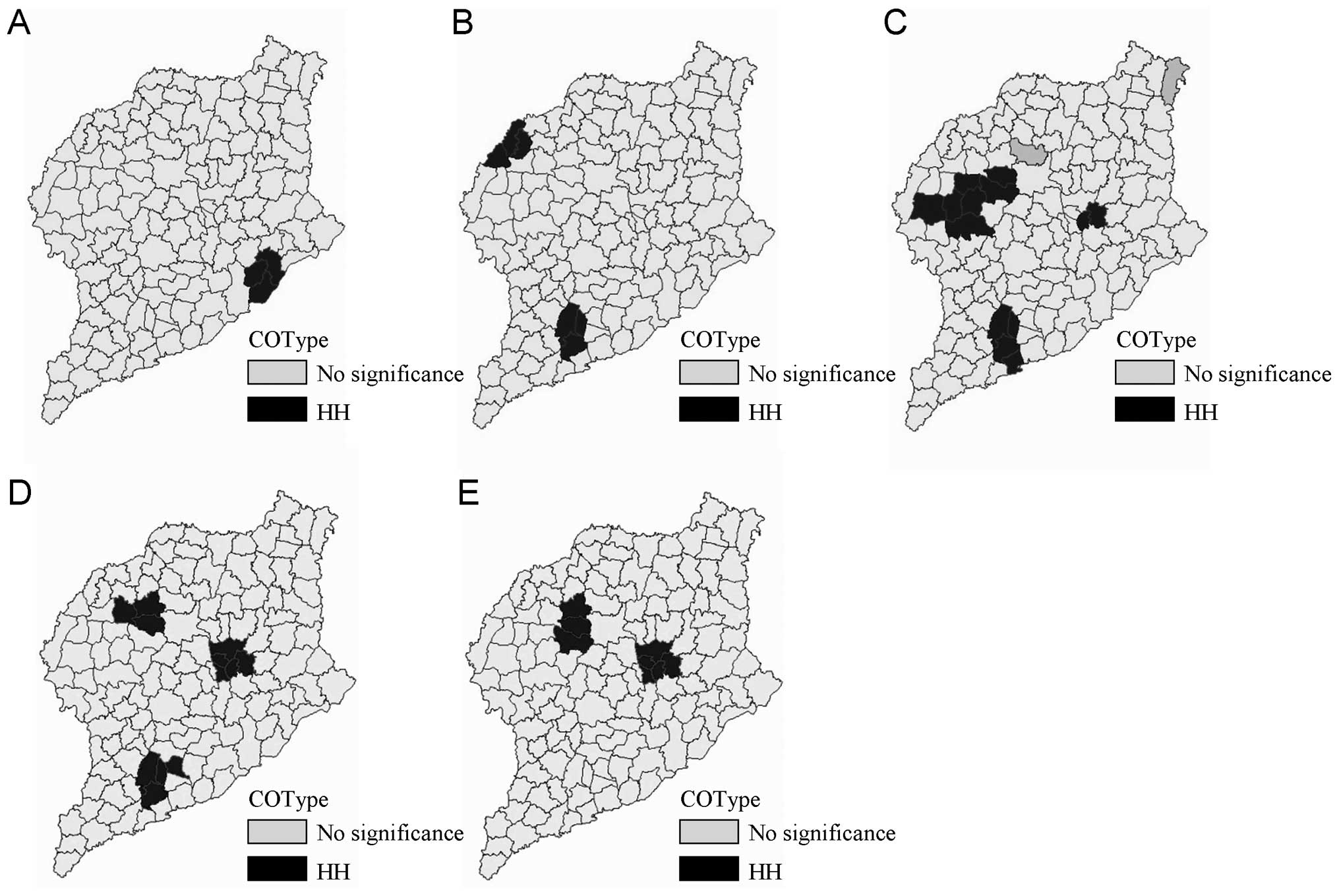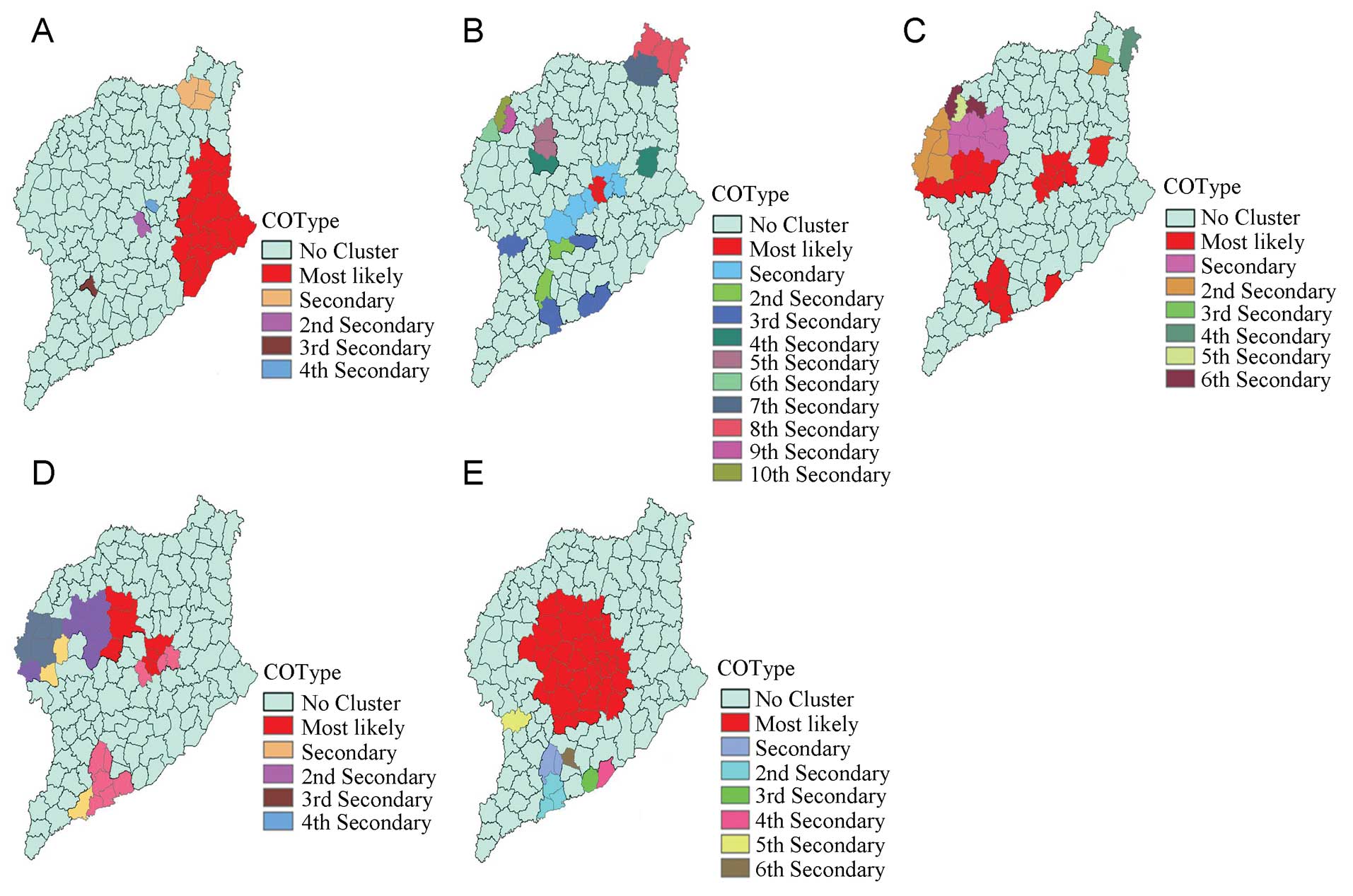|
1
|
Shang L, Xu M and Yin Z: Antiviral drug
discovery for the treatment of enterovirus 71 infections. Antiviral
Res. 97:183–194. 2013. View Article : Google Scholar
|
|
2
|
Deng X, Jia C, Chen F, Liu J and Zhou Z:
Effects of heat stress on the expression of the coxsackievirus and
adenovirus receptor in mouse skin keratinocytes. Exp Ther Med.
6:1029–1033. 2013.PubMed/NCBI
|
|
3
|
Alexandersen S, Zhang Z and Donaldson AI:
Aspects of the persistence of foot-and-mouth disease virus in
animals - the carrier problem. Microbes Infect. 4:1099–1110. 2002.
View Article : Google Scholar : PubMed/NCBI
|
|
4
|
Zhang Y, Zhu Z, Yang W, Ren J, Tan X, Wang
Y, Mao N, Xu S, Zhu S and Cui A: An emerging recombinant human
enterovirus 71 responsible for the 2008 outbreak of hand foot and
mouth disease in Fuyang city of China. Virol J. 7:942010.
View Article : Google Scholar : PubMed/NCBI
|
|
5
|
The Ministry of Health of The People’s
Republic of China. Ministry of Health of The People’s Republic of
China reported national notifiable infectious diseases from
January, 2008 to January, 2009. Gazette Minist Health People’s
Repub China. 65–68. 2009.(in Chinese).
|
|
6
|
The Ministry of Health of The People’s
Republic of China. Guide for the preparedness and control measures
of hand, foot, and mouth disease in China. (2008 version). Cap J
Public Health. 146–148. 2008.(in Chinese).
|
|
7
|
Chinese Center for Disease Control and
Prevention (China CDC). National incidence and death cases of
notifiable class A or class B infectious disease
(2008,2009,2010,2011). http://www.chinacdc.cnuri.
Accessed March 14, 2013
|
|
8
|
Anselin L, Syabri I and Kho Y: GeoDa: An
introduction to spatial data analysis. Geogr Anal. 38:5–22. 2006.
View Article : Google Scholar
|
|
9
|
Kulldorff M: A spatial scan statistic.
Communi Statist Theory Meth. 26:1481–1496. 1997. View Article : Google Scholar
|
|
10
|
Kulldorff M, Athas WF, Feurer EJ, Miller
BA and Key CR: Evaluating cluster alarms: a space-time scan
statistic and brain cancer in Los Alamos, New Mexico. Am J Public
Health. 88:1377–1380. 1998. View Article : Google Scholar : PubMed/NCBI
|
|
11
|
Kulldorff M, Heffernan R, Hartman J,
Assuncao R and Mostashari F: A space-time permutation scan
statistic for disease outbreak detection. PLoS Med. 2:e592005.
View Article : Google Scholar : PubMed/NCBI
|
|
12
|
Kulldorff M, Feuer EJ, Miller BA and
Freedman LS: Breast cancer clusters in the northeast United States:
a geographic analysis. Am J Epidemiol. 146:161–170. 1997.
View Article : Google Scholar : PubMed/NCBI
|
|
13
|
Curtis A: Using a spatial filter and a
geographic information system to improve rabies surveillance data.
Emerg Infect Dis. 5:603–606. 1999. View Article : Google Scholar : PubMed/NCBI
|
|
14
|
Frank C, Fix AD, Pena CA and Strickland
GT: Mapping Lyme disease incidence for diagnostic and preventive
decisions, Maryland. Emerg Infect Dis. 8:427–429. 2002. View Article : Google Scholar : PubMed/NCBI
|
|
15
|
Glass GE, Schwartz BS, Morgan JM, Johnson
DT, Noy PM and Israel E: Environmental risk factors for Lyme
disease identified with geographic information systems. Am J Public
Health. 85:944–948. 1995. View Article : Google Scholar : PubMed/NCBI
|
|
16
|
Morrison AC, Getis A, Santiago M,
Rigau-Perez JG and Reiter P: Exploratory space-time analysis of
reported dengue cases during an outbreak in Florida, Puerto Rico,
1991–1992. Am J Trop Med Hyg. 58:287–298. 1998.PubMed/NCBI
|
|
17
|
Mott KE, Nuttall I, Desjeux P and Cattand
P: New geographical approaches to control of some parasitic
zoonoses. Bull World Health Organ. 73:247–257. 1995.PubMed/NCBI
|
|
18
|
Zeman P: Objective assessment of risk maps
of tick-borne encephalitis and Lyme borreliosis based on spatial
patterns of located cases. Int J Epidemiol. 26:1121–1129. 1997.
View Article : Google Scholar : PubMed/NCBI
|
|
19
|
Huang L, Kulldorff M and Gregorio D: A
spatial scan statistic for survival data. Biometrics. 63:109–118.
2007. View Article : Google Scholar : PubMed/NCBI
|
|
20
|
Michelozzi P, Capon A, Kirchmayer U,
Forastiere F, Biggeri A, Barca A and Perucci CA: Adult and
childhood leukemia near a high-power radio station in Rome, Italy.
Am J Epidemiol. 155:1096–1103. 2002. View Article : Google Scholar : PubMed/NCBI
|
|
21
|
Viel JF, Arveux P, Baverel J and Cahn JY:
Soft-tissue sarcoma and non-Hodgkin’s lymphoma clusters around a
municipal solid waste incinerator with high dioxin emission levels.
Am J Epidemiol. 152:13–19. 2002. View Article : Google Scholar
|
|
22
|
Turnbull BW, Iwano EJ, Burnett WS, Howe HL
and Clark LC: Monitoring for clusters of disease: application to
leukemia incidence in upstate New York. Am J Epidemiol.
132:S136–S143. 1990.PubMed/NCBI
|
|
23
|
Hjalmars U, Kulldorff M, Gustafsson G and
Nagarwalla N: Childhood leukaemia in Sweden: using GIS and a
spatial scan statistic for cluster detection. Stat Med. 15:707–715.
1996. View Article : Google Scholar : PubMed/NCBI
|
|
24
|
Sheehan TJ and DeChello LM: A space-time
analysis of the proportion of late stage breast cancer in
Massachusetts, 1988 to 1997. Int J Health Geogr. 4:152005.
View Article : Google Scholar : PubMed/NCBI
|
|
25
|
Cousens S, Smith PG, Ward H, Everington D,
Knight RS, Zeidler M, Stewart G, Smith-Bathgate EA, Macleod MA and
Mackenzie J: Geographical distribution of variant Creutzfeldt-Jakob
disease in Great Britain, 1994–2000. Lancet. 357:1002–1007. 2001.
View Article : Google Scholar : PubMed/NCBI
|
|
26
|
Zhao Y, Liu H, Xing J, Yang H, Ma X, Xu J,
Shi J and Yan G: Molecular typing of mycobacterium tuberculosis
isolates circulating in Henan, central China. Exp Ther Med.
4:949–953. PubMed/NCBI
|
|
27
|
Sabel CE, Boyle PJ, Loytonen M, Gatrell
AC, Jokelainen M, Flowerdew R and Maasilta P: Spatial clustering of
amyotrophic lateral sclerosis in Finland at place of birth and
place of death. Am J Epidemiol. 157:898–905. 2003. View Article : Google Scholar : PubMed/NCBI
|
|
28
|
Green C, Hoppa RD, Young TK and Blanchard
JF: Geographic analysis of diabetes prevalence in an urban area.
Soc Sci Med. 57:551–560. 2003. View Article : Google Scholar : PubMed/NCBI
|
|
29
|
Yu Y, Ding S, Liang Y, Zheng Y, Li W, Yang
L, Zheng X and Jiang J: Expression of ERCC1, TYMS, TUBB3, RRM1 and
TOP2A in patients with esophageal squamous cell carcinoma: A
hierarchical clustering analysis. Exp Ther -Med. 7:1578–1582.
2014.PubMed/NCBI
|














